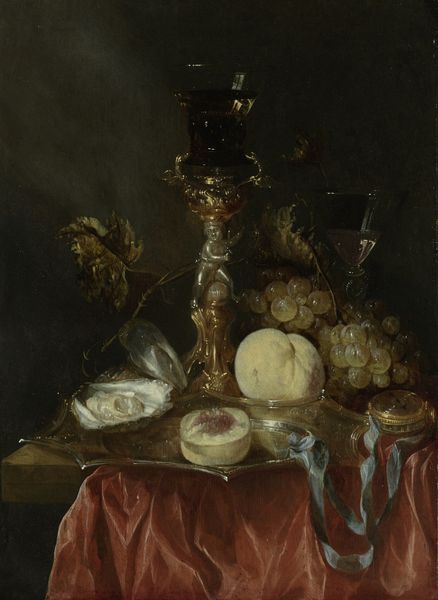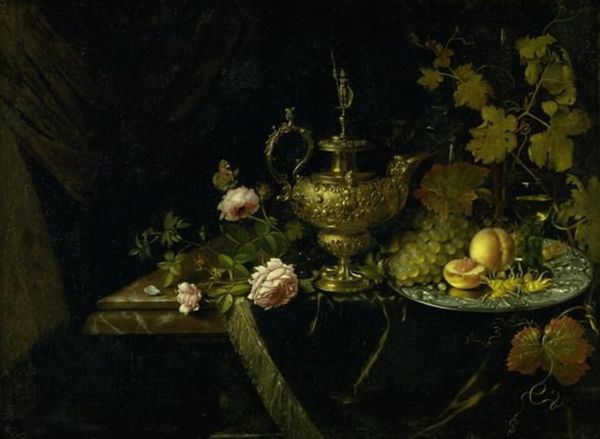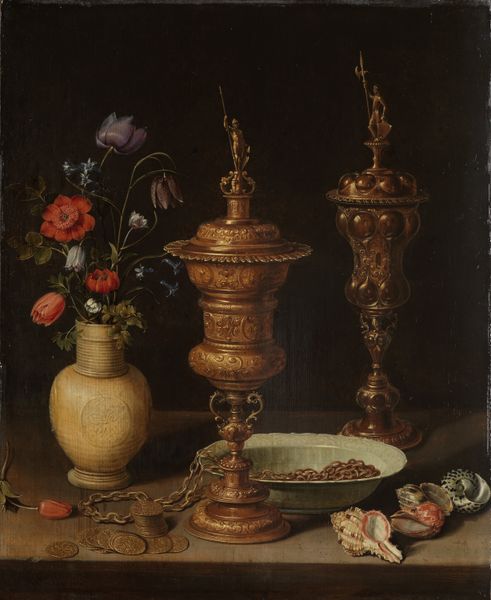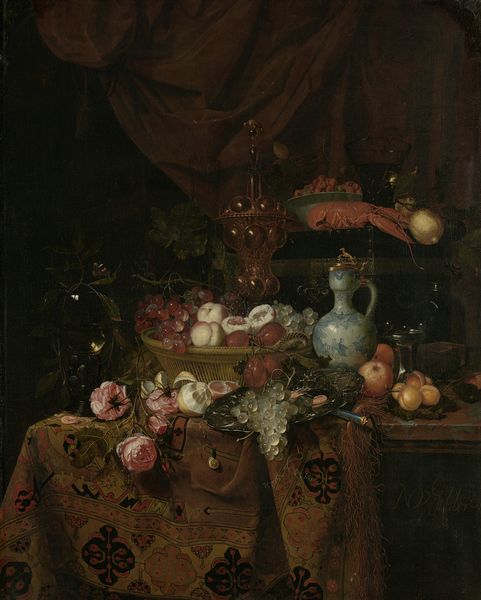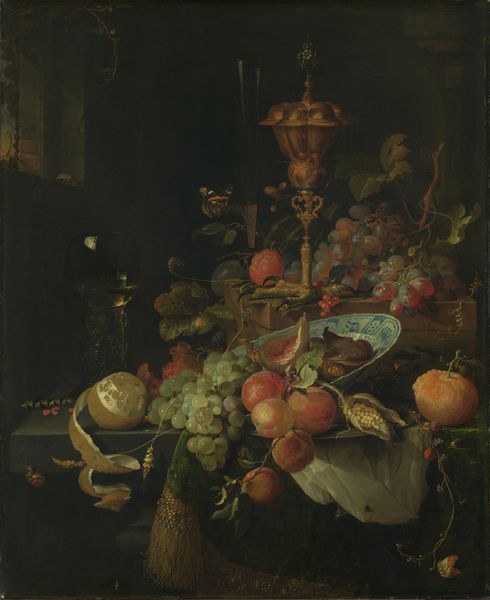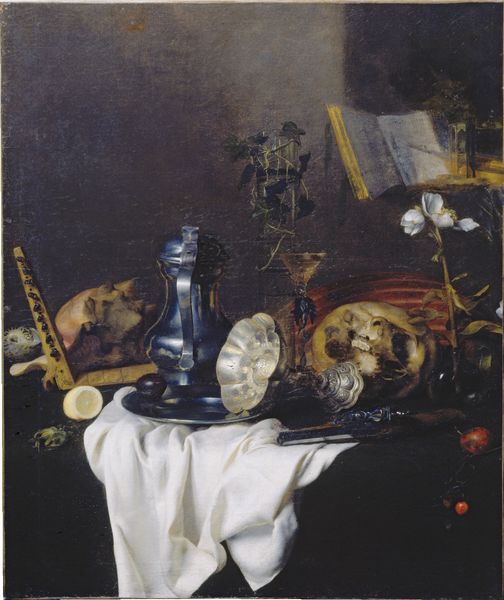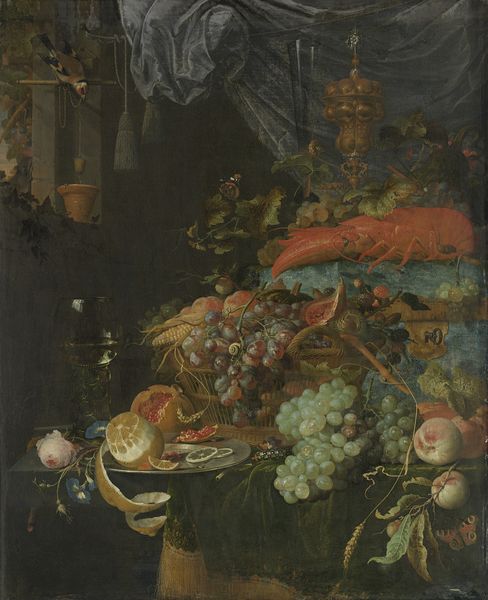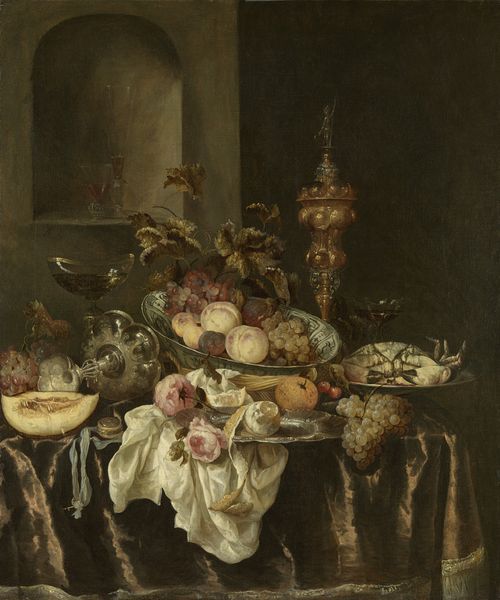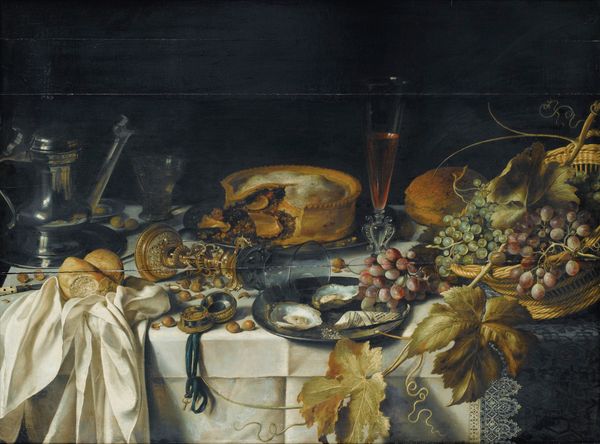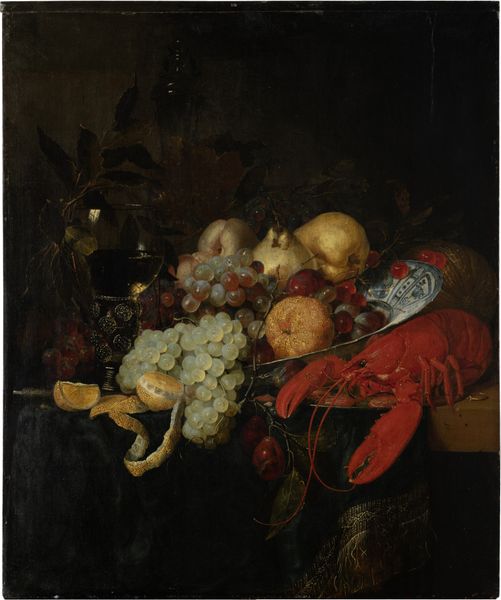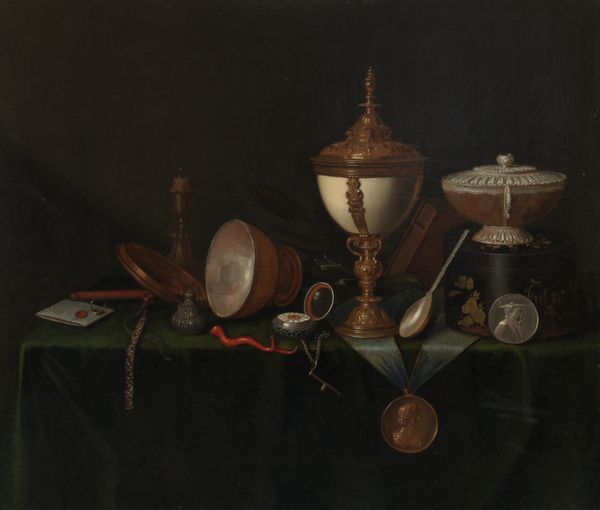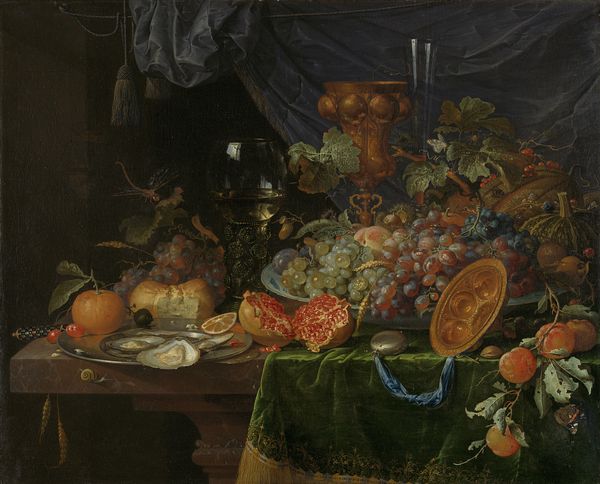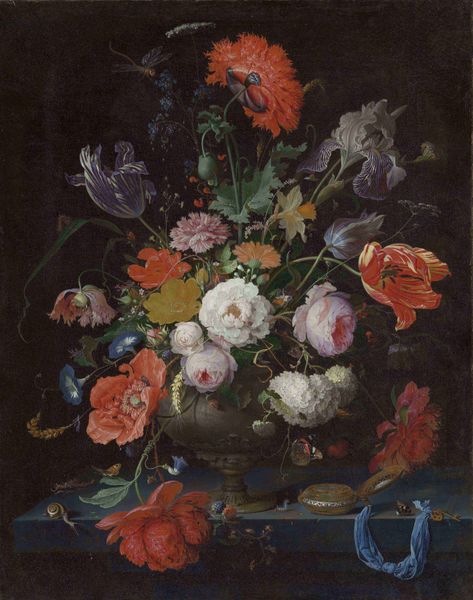
Pronk Still Life with Holbein Bowl, Nautilus Cup, Glass Goblet and Fruit Dish 1678
oil-paint
baroque
dutch-golden-age
oil-paint
oil painting
realism
Dimensions: 68 cm (height) x 56 cm (width) (Netto), 82.7 cm (height) x 71 cm (width) x 6.5 cm (depth) (Brutto)
This still life was painted by Kalf sometime in the 17th century, and it deploys oil on canvas. The items within the painting emerge from a dark background, highlighted with striking luminosity that intensifies their forms. The composition is constructed around a central, elevated nautilus shell that commands attention. The textures are rendered meticulously, contrasting the lustrous shell, the reflective glass goblet, and the soft surfaces of the fruits. The arrangement is not merely decorative; the objects are placed to create a dialogue of shapes and reflections, destabilizing conventional still life arrangements. Kalf seems less interested in naturalistic representation and more in the semiotic potential of luxury goods, using them to convey messages about wealth, taste, and global trade. The contrasting textures and the careful placement of each object invite a deeper look, challenging our understanding of surface and substance. Ultimately, the painting functions as a tableau vivant, where each object, with its unique form and materiality, plays a crucial role in a complex play of meaning.
Comments
Willem Kalf came from a wealthy merchant family from Rotterdam. As a young man he went to Paris where he specialised in still lifes and rural interiors. The "Splendid" still life The work shown here is an example of the new canon for the “Pronk” or “Splendid” still life that he established in his mature years. Focusing on only a few objects, Kalf used an evocative clair-obscur style particularly excellent for depicting light reflected in the surfaces of the objects, be it the velvety apricot bowl, the glossy porcelain, or the mother-of-pearl nautilus cup. The still life's objects The objects shown in Kalf’s still life were far beyond the reach of common folk. For example, the lidded vessel of rock crystal with gold trim shown in the middle is the so-called Holbein Bowl owned by Henry 8. (1491-1547) until 1649, a piece that Kalf might have seen in the art galleries of Amsterdam. Between the Holbein Bowl and the porcelain bowl is a pocket watch with an open crystal lid and a key suspended on a blue string. Perhaps the watch is also the key to a moral message that our earthbound materialistic lives will soon come to an end?
Join the conversation
Join millions of artists and users on Artera today and experience the ultimate creative platform.
